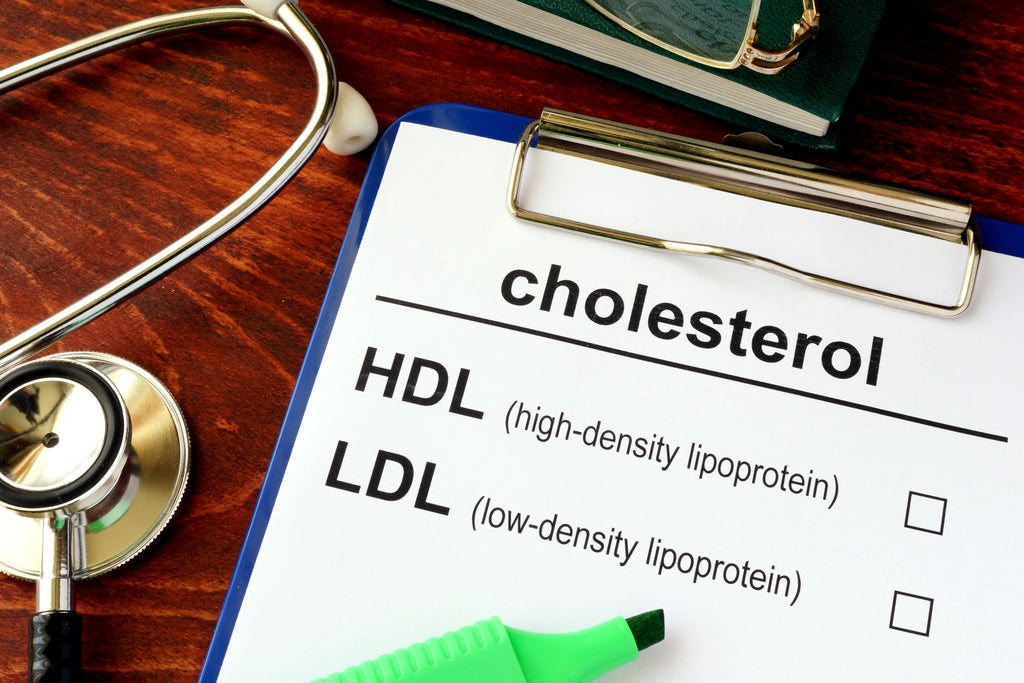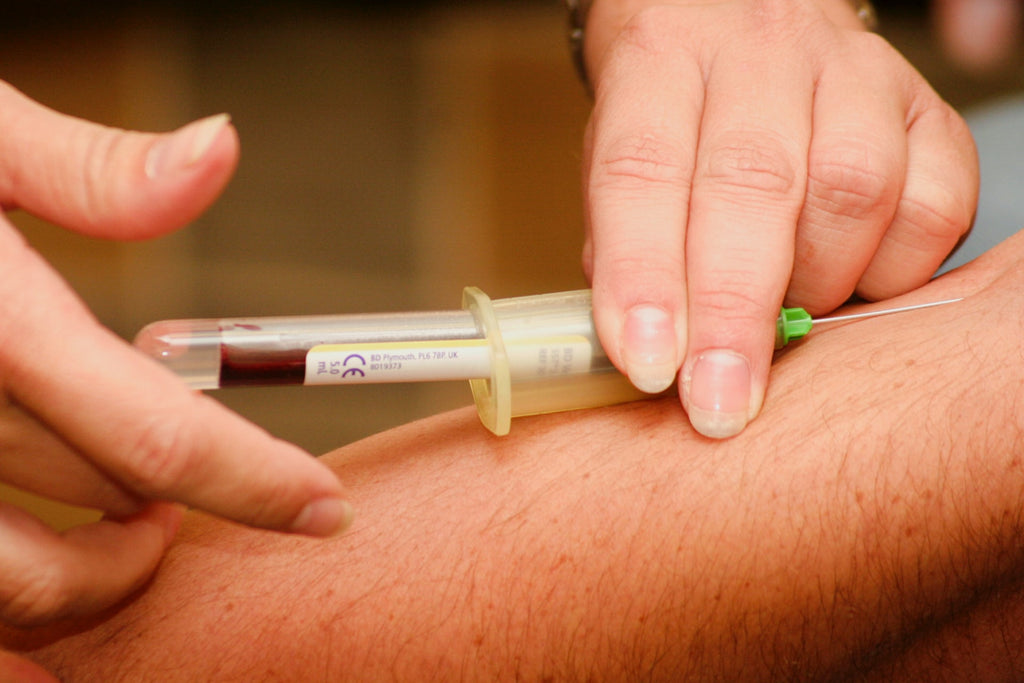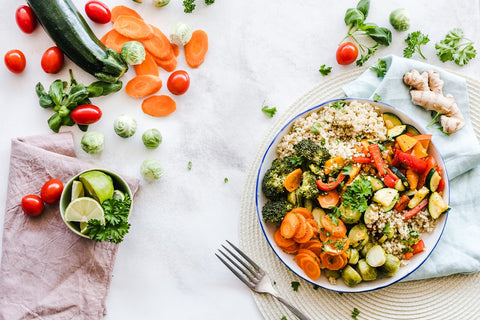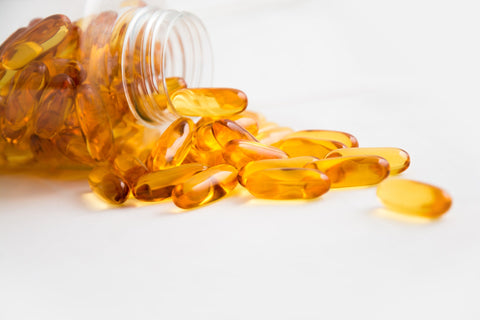Have you ever been diagnosed with high cholesterol? Or read about reducing your cholesterol? Well, it turns out that there’s more than one type of cholesterol – one bad, one good. Join us as we explore how to increase good cholesterol and maybe even reduce the bad.
What Is Good Cholesterol?

Cholesterol is a pale, waxy substance found in all your cells and has many useful functions. It also floats around in the blood, carried by proteins. Proteins carrying fats or cholesterol are called lipoproteins.
The two main lipoproteins we’re going to be looking at today are:
- Low-density lipoprotein cholesterol (LDL)- LDL can build up in the blood vessels, increasing the risk of blood clots, strokes, or a heart attack. LDL is bad cholesterol.
- High-density lipoprotein cholesterol (HDL)- HDL sweeps unneeded cholesterol out of the blood and into the liver where it can be disposed of. HDL is good cholesterol.
A high HDL level may indicate a healthier heart and a reduced risk of illness.
Low HDL Symptoms
The term for low cholesterol is hypocholesterolemia, but this generally refers to overall cholesterol being low. This can occur after taking cholesterol-lowering medication prescribed by a doctor. Cholesterol is considered low when there are less than 160 milligrams present per deciliter of blood.
Symptoms associated with, but not necessarily directly caused by low cholesterol, include:
- Low mood or depression
- Manic behavior
- Enlarged liver
- Enlarged spleen
- Yellow or orange tonsils noted specifically associated with Tangier Disease, a genetic cholesterol disorder
How to Raise HDL Cholesterol

Knowing how to increase HDL could bring many benefits to your life. As HDL helps remove LDL, this could lead to:
- Healthier heart and lower risk of heart disease
- Less risk of stroke
- More antioxidants in the blood
So, how do you ensure your HDL stays at a good level?
Quit Smoking
Smoking has been found to lower HDL levels, and worse than that, it boosts LDL levels. Plus, smoking is closely linked to many other diseases, so there’s nearly always a great reason to quit.
Alcohol in Moderation
A small amount of alcohol could be beneficial in raising HDL levels. However, high amounts of alcohol are linked to weight gain, increasing LDL, so it’s about moderation.
Does Walking Raise HDL?
Yes, in fact, all physical activity could help improve your cholesterol levels. Maintaining a healthy weight can, in most people, keep LDL levels lower, plus exercise actually boosts the production of HDL.
Diet
One of the simplest ways to manage your body’s cholesterol is to watch what you put into it – namely, your diet. It’s generally understood that trans fats and saturated fats will raise LDL levels, while unsaturated fats, fruit, veggies, and healthier oil choices keep it lower. Food does not raise HDL by itself, but by lowering LDL levels, you improve the ration and give your body the boost it needs.
What Foods Raise HDL?

Raising HDL in comparison to LDL is generally about lowering the LDL, so the HDL is higher. You can do this with a heart-healthy diet, physical activity where possible, and a healthy lifestyle. Here are some foods that can help you along that path:
Whole Grains
Whole grains are grains that haven’t been overly processed, so they may have the outer husks still on or other parts that are normally removed. Examples include wild rice, bran, and a range of cereals. Whole grains are high in soluble fiber, which is a great tool in fighting rising LDL levels. Eat whole grains at least twice a day. Think whole-grain toast or cereal for breakfast, a wild rice salad at lunch, or burgers in whole-grain buns for dinner.
Fruit
Many fruits can be beneficial in lowering LDL levels. Again, you’re looking for the high fiber option, so we’re talking about apples and pears, or persimmon, oranges, and kiwifruit. Just be mindful that many fruits are high in sugar, which has its own impact on health when not taken in moderation. It may surprise you to know that the avocado is a very beneficial fruit for cholesterol, as even though it’s high in fat, it’s all unsaturated, “healthy” fat.
Extra Virgin Olive Oil
The fats in olive oil are considered “heart-healthy,” making it a great substitute for other oils if lowering LDL is a concern. The great thing about this oil is that it tastes great too so that it can be used in salad dressings, sauces, dips, and numerous other recipes. It breaks down at very low temperatures too.
Beans
Beans, pulses, and legumes are an amazing source of fiber. If you soak and cook your own dried beans such as black beans or borlotti beans, this is a great folate source, another heart-healthy micro-nutrient. Plus, beans are incredibly versatile and suitable for most diets, including vegan and vegetarian.
Other Ways to Increase Good Cholesterol

Boost your HDL with a everyday supplements such as Bergamot , Healthy Dad essential stack, Blood Pressure RX, designed to complement a healthy diet and support a healthy ratio of the fats (lipids) within the blood. Revive Lipid is suitable for any gender and contains citrus bergamot and beta-sitosterol, ingredients associated with reducing LDL or “bad” cholesterol. This helps bring balance back to your cholesterol levels and could even be beneficial in terms of blood sugar and insulin levels.
Have you had your cholesterol checked lately? Keep on top of cholesterol with a healthy diet, lifestyle, and supplements designed with you in mind.
Takeaway
Find out how to increase HDL or good cholesterol and improve or maintain good health. A careful diet and the use of best health supplements can help keep high HDL on the menu.
The information being presented in this blog is intended to be used as educational or resource information only. It is not intended to be a substitute for medical advice from your healthcare provider. This content should not be used for the diagnosis or treatment of any medical condition. If you have any questions or concerns about your health, please contact your healthcare provider. You should call 911 for all medical emergencies. Revive MD is not liable for any advice or information provided on this blog, which advice or information is provided on an “as-is” basis, and assumes no liability for diagnosis, treatment, decisions, or actions made in reliance upon any advice or information contained on this blog. No warranties, express or implied, are made on the information that is provided.


